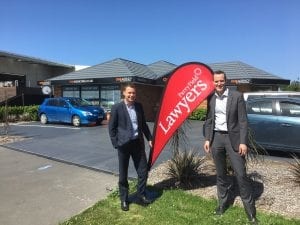Approval is needed where an “overseas person” acquires sensitive New Zealand assets. This article describes the key points about the process to be aware of in advance.
From our experience in obtaining OIO approval we have drawn together the following points which answer the key questions an investor has about the process and steps required.
Who is the OIO?
The Overseas Investment Act 2005 (OIA) is administered and enforced by the Overseas Investment Office (OIO) which processes the applications made. It is based in Wellington and its team is growing quickly as it deals with more applications and enforcement.
When is consent needed?
Consent is required for an “overseas person”. In basic terms that means a person who is not an NZ citizen or a person ordinarily resident in NZ. However, it is worth discussing individual circumstances as it may be complicated to work out if a person/entity qualifies.
What about related parties back overseas?
Even if the entity making the purchase is not an “overseas person” they may be an “associate” of an overseas person. If, for example, someone overseas is controlling their actions or funding the purchase. If so, then approval will still be needed.
What level of control are you talking about?
This is a very wide definition and can be specific or general, indirect or direct and whether actually legally enforceable or not. It is trying to capture the individual that is acting for someone else who would need approval if they were the one that applied.
So what is a “sensitive” New Zealand asset?
This can be complicated to determine but generally includes:
- certain types of land such as non-urban land of 5 hectares or more (that is, most farms);
- acquiring 25% or more ownership or controlling interest in an entity which has businesses assets worth more than $100 million (exceptions apply for Australians and some others that increase that threshold); and
- fishing quotas.
I am only interested in buying land – is it sensitive?
Determining if land is sensitive requires special analysis because, for example, it may include land that adjoins a reserve or public park or includes foreshore or seabed. So it may not be as simple as looking at the legal title description because you also need to look at what type of land there is surrounding it. Examples include land over 0.4 hectares that includes or adjoins reserves or historic or heritage areas, land on specified islands or if it is part of the foreshore or seabed.
If I need to apply then what do I need to show to get approval?
If you are an overseas person then when you make an application you will need to satisfy:
- Investor Test (good character, have business experience, be financially committed to that investment); and
- Benefit to New Zealand Test.
How do I show Benefit to New Zealand?
There are 21 criteria that the OIO will look at (eg will there be creation of new jobs). The OIO is also interested in understanding the ‘counterfactual’ – ie, what would happen if you didn’t make the investment (would someone else buy it, would they invest or not invest further money in it etc).
What if I am moving to New Zealand permanently, does that affect things?
Yes – in that situation you may not have to satisfy the Benefit to New Zealand test.
How long will all this take?
The OIO will categorise the application into one of three types and they will aim to respond within 30 – 70 working days, depending on the category of application. However, there is no statutory timeframe for the decision to be made so it could take less or more time, depending on the situation.
The OIO may also ask questions of the applicant which can delay the process so it is really important to get the application right when it is first submitted. Last year 22% of applications were initially rejected as they lacked information or were of poor quality.
In our experience the OIO process does take time to comply with but it is fairly straightforward. If you have questions about any of the topics mentioned above then we would be happy to discuss your situation with you.
This article is not a substitute for legal advice and you should talk to a lawyer about your specific situation. Should you need any assistance please contact Steven Moe at Parry Field Lawyers (348-8480) stevenmoe@parryfield.com








